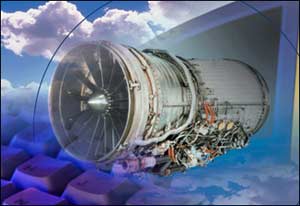High in the sky, the air is very thin, yet when we fly in an airplane, we do not feel breathless. So where does the air in an airplane come from?
In the early days of aviation, the air in the aircraft cabin originated from the atmosphere outside the aircraft.
 |
The turbofan engine stimulates the compressor to operate, causing the thin outside air to increase pressure into the aircraft cabin (Image: ghs) |
Since airplanes do not fly at extreme altitudes, the cabin is not completely sealed; oxygen from the air is present in the cabin.
Although the oxygen level in the cabin is slightly lower than at ground level, it does not significantly affect human physiology.
Modern aircraft operate at very high altitudes. If a natural oxygen supply method were used, it would not be sufficient; at an altitude of 1500 meters, the oxygen content is only 15.8% compared to sea level, making it clear that pilots and passengers would not be able to breathe normally. Therefore, aircraft designers had to devise a way to extract oxygen from the air, known as the open oxygen supply method.
The process of oxygen supply using the open oxygen supply method is not complicated. The turbofan engine stimulates the compressor to operate, causing the thin outside air to increase pressure into the aircraft cabin, ultimately reaching a pressure level close to that at ground level. At this point, the oxygen content in the cabin air is not significantly different from that at ground level, allowing pilots and passengers to breathe normally.


















































